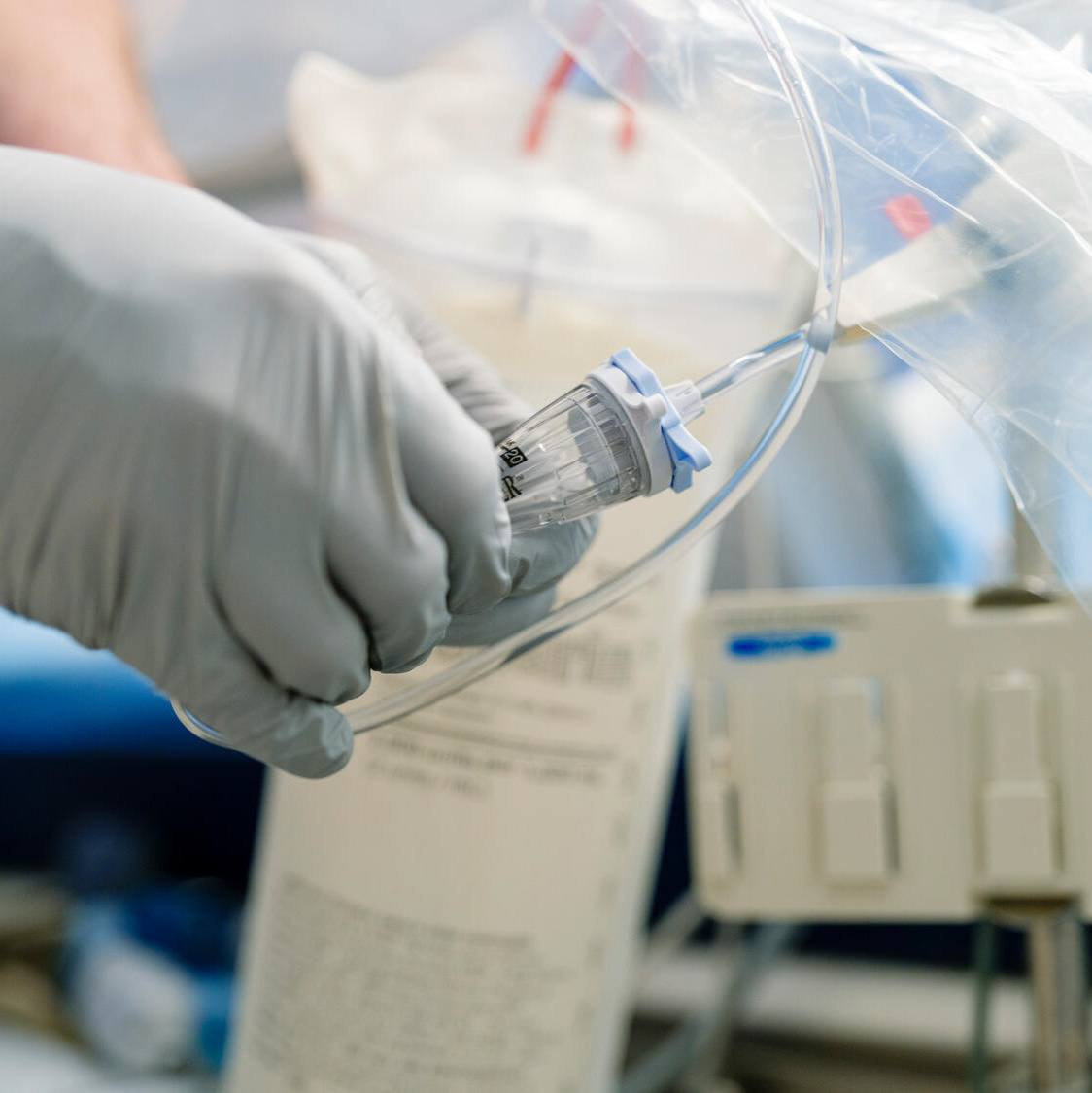-

Mayo Clinic Health Letter: Highlights from the June 2014 Issue
ROCHESTER, Minn. — Here are highlights from the June issue of Mayo Clinic Health Letter. You may cite this publication as often as you wish. Reprinting is allowed for a fee. Mayo Clinic Health Letter attribution is required. Include the following subscription information as your editorial policies permit: Visit www.HealthLetter.MayoClinic.com or call toll-free for subscription information, 1-800-333-9037, extension 9771. Full newsletter text: Mayo Clinic Health Letter June 2014 (for journalists only).
Pros and cons of warfarin and newer anti-clotting medications
For people with atrial fibrillation, a heart rhythm problem that increases the risk of stroke, there are more medication treatment choices than ever before, according to the June issue of Mayo Clinic Health Letter.
Doctors often recommend an anti-clotting medication for patients with atrial fibrillation, which can lead to the development of blood clots in the heart. These clots can break off and travel to ― and potentially block ― an artery that supplies blood to the brain. The result is a stroke. More than 15 percent of strokes are attributed to atrial fibrillation.
For decades, the only anti-clotting medication was warfarin (Coumadin). In the last few years, three more options have become available.
While all of the anti-clotting medications reduce the risk of stroke by about 60 percent, there are many nuances in selecting the best choice. Factors include cost (warfarin is least costly) and convenience. Warfarin requires frequent blood checks to ensure the dose is correct. Newer medications don’t require this level of monitoring as the anti-clotting level is more predictable. One downside of the newer medications is that — unlike warfarin — there isn’t a good agent to reverse the anti-clotting effect and rapidly stop a bleeding incident.
Here are some pros and cons of each option:
Warfarin
Pros: Long track record with predictable benefits and results; once daily dosing; clotting effect rapidly reversible if needed.
Cons: Requires weekly or monthly blood tests to monitor dosing. Certain foods and drugs alter its effectiveness.
Dabigatran (Pradaxa)
Pros: Slightly lower risk of stroke caused by blood clots compared to warfarin; no blood monitoring required.
Cons: More likely to cause upset stomach than warfarin; twice-daily dosing, making missed dose more likely; higher incidence of major bleeding events in those 75 or older compared with warfarin.
Rivaroxaban (Xarelto)
Pros: Once-daily dosing; rates of bleeding events or stroke caused by bleeding in the brain lower than with warfarin.
Cons: Slightly higher risk of gastrointestinal bleeding than with warfarin.
Apixaban (Eliquis)
Pros: Rates of stroke caused by bleeding in the brain are lower than with warfarin; lower rate of major bleeding events compared to warfarin; lower rate of stomach upset than dabigatran.
Cons: Twice-daily dosing, making missed doses more likely.
For patients doing well on warfarin, there’s typically no advantage to switching medications. Patients should talk with their doctors about the best anti-clotting medication for specific circumstances.
Finding relief for cancer-related symptoms
For patients with cancer, dealing with the tumor is just part of the battle. Other signs and symptoms of the disease or the treatment can greatly impact quality of life. The June issue of Mayo Clinic Health Letter offers tips to manage common symptoms.
Fatigue ― This is the most common side effect of cancer, and there can be many underlying causes. A doctor can make an evaluation and recommend treatment options. When a specific treatment is not available, helpful strategies include:
- Planning activities for times of the day when the patient has the most energy.
- Incorporating moderate exercise into the daily routine.
- Eating a good breakfast and snacking every three to four hours.
- Employing mind-body techniques. Meditation, hypnosis, biofeedback, guided imagery, music therapy, yoga and tai chi can help with fatigue and ease tension and anxiety by encouraging relaxation.
Weight loss ― Another common side effect is weight loss, which may not be a significant problem unless it leads to weakness or fatigue. Strategies include:
- Consuming more high-calorie beverages and foods, focusing on protein and complex carbohydrates such as whole grains.
- Eating smaller and more frequent meals throughout the day.
- Taking a medication to stimulate appetite.
Pain ― Cancer and cancer treatment may be associated with pain. Cancer-directed treatment often eases this pain. Other strategies include:
- Taking pain medications or trying a nerve block, where medication is injected around the nerve or into the spine to block pain.
- Using alternative therapies such as acupuncture, reiki and therapeutic touch. Acupuncture is known for its pain-relieving abilities. It also may relieve nausea and vomiting. Other touch therapies may promote relaxation and may reduce pain and anxiety.
Eating highly functional foods
Functional food is the new term for foods that have a potentially positive effect on health beyond basic nutrition. In the June issue, Mayo Clinic Health Letter includes an eight-page special report on highly functional foods, what they are and what’s known about how they may benefit health.
Here are some highlights:
What they are: Functional foods include vegetables and fruits. They include foods with ingredients added for a specific physiological function, such as yogurt with added cultures to aid digestion. Whole grains containing dietary fibers and oily fish high in omega-3 fatty acids also are functional foods.
Phytochemicals: There’s growing evidence that phytochemicals, a broad range of naturally occurring compounds found in plants, may be essential to the body’s ability to ward off disease and heal itself. It’s these phytochemicals, with complicated-sounding names such as beta carotene, isothiocyanates, glucosinolates, lignans and luteins, that put foods in the functional category.
Health benefits: While research is still preliminary, phytochemicals appear to help prevent chronic illnesses such as heart and blood vessel disease, cancer and diabetes. Here are some findings:
- Cancers of the mouth, stomach: In a report titled, “Food, Nutrition, Physical Activity and the Prevention of Cancer,” the World Cancer Research Fund and the American Institute for Cancer Research reported that nonstarchy vegetables and fruits may protect against cancers of the mouth, larynx, esophagus and stomach.
- Prostate cancer: There’s evidence that eating cruciferous vegetables ― including cabbage, brussels sprouts, broccoli and cauliflower ― can reduce the risk of prostate cancer. Researchers who reviewed 13 separate studies found the consumption of cruciferous vegetables was associated with a significantly decreased risk of prostate cancer. Eating cruciferous vegetables has been linked to reduction in risk of breast cancer, stomach cancer and lung cancer, too.
- Heart health: Higher intakes of phytochemical-rich foods are associated with a lower risk of abdominal obesity. They’re also associated with healthier blood lipid profiles and higher HDL “good” cholesterol and lower blood pressure.
Functional foods in the diet: Planning menus around specific phytochemicals would be daunting; there are tens of thousands of phytochemicals in food. A better approach is to include a large amount of fruits and vegetables in the daily diet. The Department of Agriculture recommends 50 percent of calorie intake come from fruits and vegetables. Including vegetables and fruits with a variety of colors increases the likelihood of getting the greatest number of phytochemicals.
###
Mayo Clinic Health Letter is an eight-page monthly newsletter of reliable, accurate and practical information on today’s health and medical news. To subscribe, please call 1-800-333-9037 (toll-free), extension 9771, or visit www.HealthLetter.MayoClinic.com.
About Mayo Clinic
Recognizing 150 years of serving humanity in 2014, Mayo Clinic is a nonprofit worldwide leader in medical care, research and education for people from all walks of life. For more information, visit 150years.mayoclinic.org, www.mayoclinic.org and newsnetwork.mayoclinic.org.
MEDIA CONTACT:
Brian Kilen, Mayo Clinic Public Affairs, 507-284-5005, Email: newsbureau@mayo.edu







